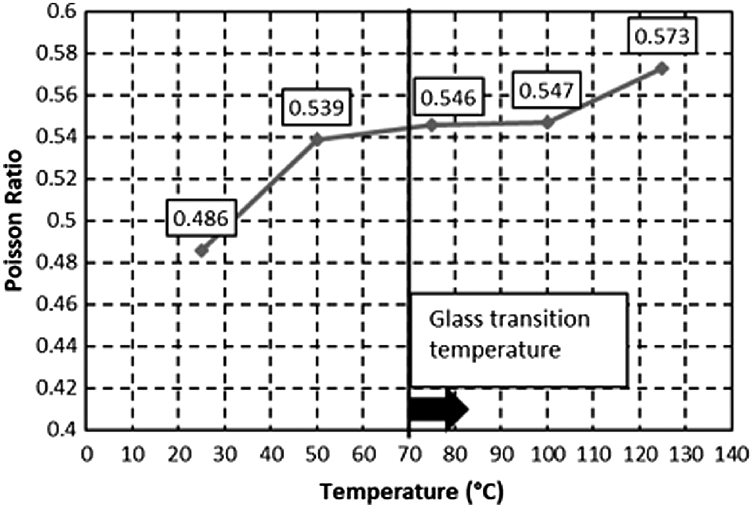Heated Polymer Poisson Ratio: What Is It?
The quantity of heat flow in a material can be measured using the heated polymer Poisson ratio. It is possible to measure it by measuring the average temperature rise throughout an area while keeping the pressure constant. This gives an approximation of how quickly molecules travel through a material. The heated polymer Poisson ratio will be utilized in order to do an investigation into the impact that heating has on substances, such as carbon nanotubes, which have been engineered to transfer heat (CNTs) efficiently.
Poisson Ratio
The heated polymer Poisson ratio of lateral strain to axial strain in an isotropic material is referred to as the Poisson ratio. It was the French mathematician Siméon Denis Poisson who came up with the idea for the first time in the year 1822.
The following equation can be used to get the Poisson ratio:
(1-2)(n)+(2)a(n)=0
Experimental approaches
We utilized an optical approach for the measurement of the heated polymer Poisson ratio. Both a spectrophotometer and a quartz crystal dispenser were required pieces of apparatus for this particular experiment. The following is the process that we followed in order to get the outcomes that we wanted: We began by placing 20 grams of polymer in the quartz crystal dispenser, and after that, we used an electric heating element to raise the temperature of the polymer until it reached 400 degrees Celsius.
The melting point of polymer-compounders.com is approximately 280 degrees Celsius. After determining its density and index of refraction, we positioned it in the field of view of an optical microscope that was outfitted with an extinction coefficient detector. This allowed us to determine its value for the index of refraction through the use of measurements that were made with light that was reflected from each surface that was contained within the sample container before placing it back on top again in order to prevent any changes from taking place.
While testing multiple locations inside the same region, after cooling down each point individually at first, then laterally afterwards moving vertically above downwards, etcetera further still until stopping completely because else there wouldn’t have been anything left anymore anyway. Don’t worry about losing anything; don’t worry, even though this could seem like a practice, because most people don’t ever do this type of thing often enough. In any case, I’m sure that whatever happens will somehow come out to be fine, so just try not to push yourself too much, all right?
The Findings, as well as a Commentary
An extensometer is an instrument that is used to determine a material’s heated polymer Poisson ratio, which is defined as the ratio of the lateral strain to the axial strain. In the scientific literature, this measurement has been utilized extensively for the purpose of determining the properties of various materials, such as the elastic modulus and the viscosity. Despite this, there are still some questions regarding its reliability it due to the following reasons:
Under varying environmental conditions, the Poisson ratio might not remain the same for every sample (i.e., temperature change). Due to the high levels of intrinsic viscosity found within some types of plastic materials, it can be challenging to obtain accurate results from measurements performed on these types of plastics because the materials themselves have low elastic constants, making it more difficult to measure the materials.
Heated Polymer Poisson Ratio, Things To Know:
- Poisson’s ratio is the ratio of axial or lateral strain to transverse strain that is less than 1.
- It is also defined as the ratio of the amount of transverse expansion to the amount of axial compression when these changes are small.
- Poisson’s ratio (v) can be written in math like this: = – l/a
- The ratio of an object’s original size to its changed size is the measure of strain.
- Poisson’s ratio stays positive for deformation due to tension.
- Poisson’s ratio is negative when there is compression.
- If we only pull on an object in one direction, it will get smaller in the opposite direction of the force.
Conclusion
The heated polymer Poisson ratio is one of the most important variables in the field of polymer science. This article presents a method for measuring the heated polymer Poisson ratio. The primary objective of this research was to investigate the degree of precision that may be achieved when calculating this number by employing two distinct approaches, namely, an analytical approach and a verification approach.
The findings indicated that both approaches had accuracy levels that were comparable to one another when compared to one another, but there were still some problems with their accuracy levels. As a result, it would be ideal if we could find an additional method to measure these numbers so that we can get better results from them in future research.
FAQs
What does Poisson’s ratio mean?
Poisson’s ratio is the ratio of transverse strain to lateral and axial strain, which is the opposite of the transverse strain ratio. In materials science, the poisson effect is measured by poisson’s ratio (nu), which is the negative of the ratio of transverse strain to axial strain.
What does Poisson’s Ratio do?
Poisson’s ratio can be used to figure out what kind of things a material is made of. The material that doesn’t get smaller is brittle, but the material that does get smaller is ductile. The material with a high poisson ratio is easier to pull than the one with a low poisson ratio. When pulled, the material that does not stretch breaks. The Poisson’s ratio makes it easier to choose the right materials for a job. For example, if you use an elastic rubber stopper on a bottle of champagne, the champagne will leak.

















